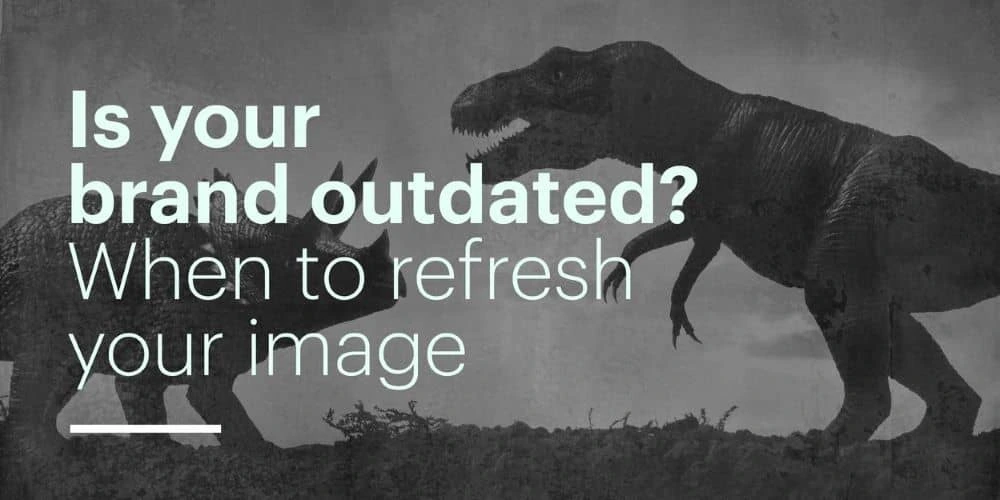Sometimes, change is a good thing.
A fresh lick of paint can revive a dull living room, a new haircut can boost self-esteem, and a rejuvenated image can bring life back to an outdated brand.
The catch is that, unlike changing your hairstyle, a brand refresh isn’t something to do on a whim because you’re bored or haven’t had a chance to play with your design software in a while. Without a solid strategy, your renovation could turn into a DIY disaster.
Related: 10 best branding & corporate identity design examples
When you’re considering a brand refresh, start by asking a few honest questions:
- Why does the brand need a new image?
- How will a refresh help the business?
- What’s involved in a refresh, and what resources will you need?
Let’s take a look at a few reasons why a brand refresh might be the right choice for your company today.
Is my brand outdated? Separating the dynamite from the dinosaurs
Perhaps the most obvious reason to refresh a brand is that its image has simply outgrown its effectiveness. IBM is a great example of a brand that’s successfully evolved its image to match the changing nature of its product portfolio. By adapting its visual identity and voice throughout the decades, IBM has shown it can stand up against modern competitors.

This IBM logo offers a look back at the brand’s history
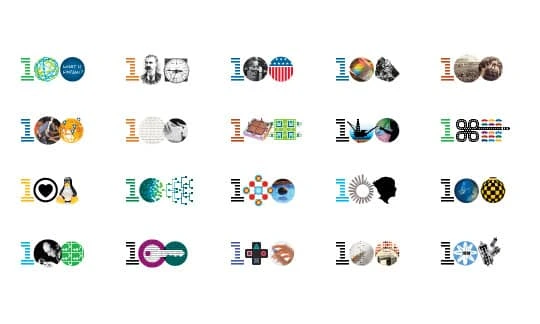
A selection of icons designed for IBM’s centennial
Many enterprises struggle to make changes because an old brand can gradually start to feel like an old pair of shoes-sturdy and comfortable. Unfortunately, you will need to make changes eventually if you want to be seen as an authority in your space, rather than a relic. Here are a few ways to check whether your brand is becoming outdated:
- Is your visual identity fresh and modern? Look at your logo, website, and any other visual media you use to connect with customers.
- When was your branding designed? If your logo is more than 20 years old, it’s probably time to revisit it.
- Is your brand getting the right results? Are you still marketing to the right audiences?
- Does your messaging and positioning accurately reflect your current value proposition and customer pain points?
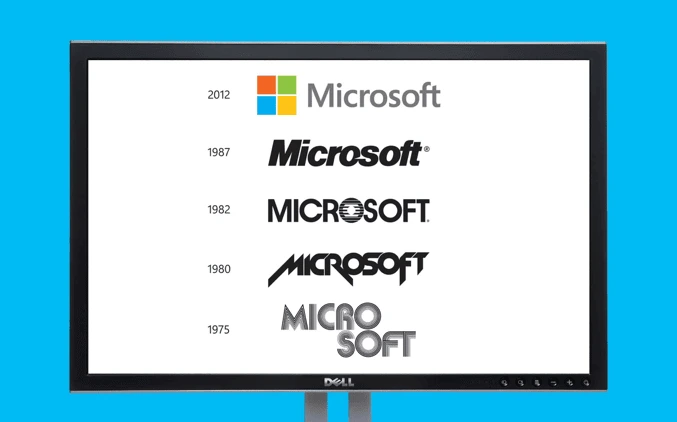
A timeline of Microsoft’s evolving logo design
Refreshing vs. rebranding
It’s easy to confuse a rebrand with a brand refresh, but ultimately, they serve two different purposes. A company rebrand is an extensive endeavor that involves completely removing the basic structure of the brand and starting over. A company typically only pursues this strategy if the current brand identity is confusing, contradictory or misrepresents the core of the company’s mission. A brand refresh, however, involves updating and building upon the brand structure that is already known and loved. Rather than a complete overhaul, it involves an update to visual elements, tweaks to messaging or changes to other differentiators.
5 practical reasons to refresh your brand
A brand is more than just a name and a logo. It’s also your company’s reputation, identity, and public perception. In many cases, companies recognize the need for change but want to preserve the brand’s positive aspects. With that thought in mind, here are 5 reasons you might consider updating the brand rather than undergoing a full rebrand.
1. You aren’t getting enough attention
A great brand doesn’t just generate an image for your company; it gives your customers a reason to sit up and take notice. There are plenty of ways to tell whether your audience has moved on from your message, and the first is that you’ve seen a steady decline in sales.
If people are just as happy with your products as they’ve always been, but you’re not gaining ground in the market, this could be a sign that your brand has lost its selling potential.
Remember, refreshing your brand doesn’t involve turning your identity upside down. Instead, it can be something as simple as redesigning your logo, unrolling a new slogan, or switching to a new color palette. It’s giving your audience something new to chew on while sticking to your brand’s core values. []
The power is completely in your hands.
2. You don’t stand out from the competition any more
Making an impact is hard in today’s saturated online marketplace—and copycats are running wild. Even if you have a great product or service, it won’t be enough if customers can’t distinguish your brand from the other players in your niche. You’ve got to stay ahead of the pack.
If your brand image is starting to feel like a copy-paste job, then you’re going to need new and unique ways to recapture your audience’s interest.
This can be a complex process because it means getting to the bottom of what your company stands for, what it can do today, and how it outshines your competitors. If you can find a way to differentiate yourself, you’ll find it much easier to drive brand awareness and loyalty.
3. Your company has changed
A founder’s initial vision and the company that grows out of it aren’t always one and the same. Sometimes, a brand is born with a particular product in mind—like Starbucks and its signature coffee. Then, as the business continues to grow, it’ll develop new products to better serve its audience.
Over the years, Starbucks has updated its product list to include everything from sandwiches to iced tea. These changes meant that the company had to reimagine the brand’s image based on what they could offer customers in a new marketplace.
As the business evolves, keep an eye on your brand and take note of any constraints that might make it difficult to branch out into new areas.
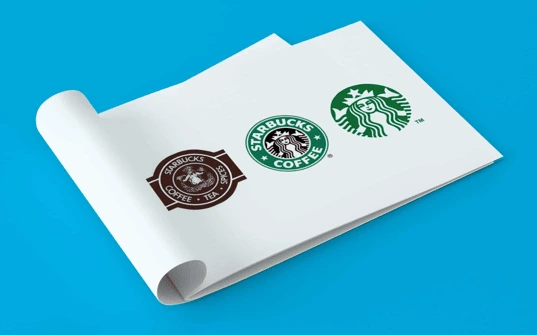
Starbucks has evolved to serve much more than coffee
4. Your message is inconsistent
For most companies, building a brand is about refining ideas and values into a voice and image that they can project to the world. As you can imagine, this is a complicated process that even the best of intentions can belie.
A brand refresh can help to realign your company’s values when they start to lose their way. After all, we know how valuable brand consistency is—not just to your customers’ experience, but also to your bottom line. If you want your brand to become a trusted name, then you’ve got to deliver the same, familiar experience whenever customers interact with you.
5. You want to attract new customers
When a brand is just getting started, it’s often easier to target a small, niche audience. However, as the brand grows, it’ll find opportunities to expand into different areas that offer new sources of revenue.
Sometimes, tapping into a new share of the market requires changing your voice or image so it’s more likely to appeal to a wider range of customers. A brand refresh can help you reimagine what the future looks like for the company.
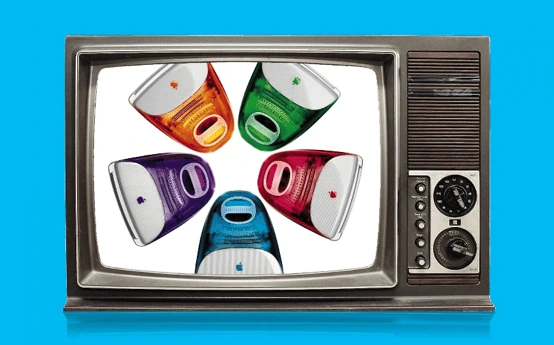
Apple excels at making its brand & products feel fresh. Remember these?
Is it time to refresh your brand?
Ultimately, the decision to refresh your brand can be a difficult one, but it’s worth thinking about when your current image isn’t delivering the results you need.
In severe cases, you might discover that the best way to bring your company back to life is a complete rebrand, where you go back to the drawing board and start fresh. While a rebrand is a more dramatic approach, a refresh allows companies to make tweaks over time that help their brand evolve with the market.
